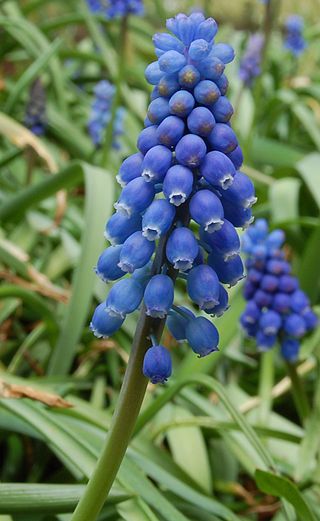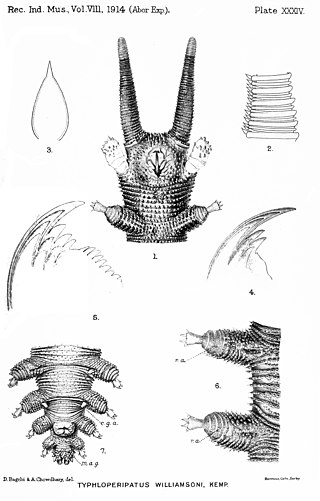
Lorisidae is a family of strepsirrhine primates. The lorisids are all slim arboreal animals and comprise the lorises, pottos and angwantibos. Lorisids live in tropical, central Africa as well as in south and southeast Asia.

Squirrels are members of the family Sciuridae, a family that includes small or medium-size rodents. The squirrel family includes tree squirrels, ground squirrels, and flying squirrels. Squirrels are indigenous to the Americas, Eurasia, and Africa, and were introduced by humans to Australia. The earliest known fossilized squirrels date from the Eocene epoch, and among other living rodent families, the squirrels are most closely related to the mountain beaver and to the dormice.

Kookaburras are terrestrial tree kingfishers of the genus Dacelo native to Australia and New Guinea, which grow to between 28 and 47 cm in length and weigh around 300 g (11 oz). The name is a loanword from Wiradjuri guuguubarra, onomatopoeic of its call. The loud, distinctive call of the laughing kookaburra is widely used as a stock sound effect in situations that involve an Australian bush setting or tropical jungle, especially in older movies.

Lynx spider (Oxyopidae) is a family of araneomorph spiders first described by Tamerlan Thorell in 1870. Most species make little use of webs, instead spending their lives as hunting spiders on plants. Many species frequent flowers in particular, ambushing pollinators, much as crab spiders do. They tend to tolerate members of their own species more than most spiders do, and at least one species has been identified as exhibiting social behaviour.

Horseshoe bats are bats in the family Rhinolophidae. In addition to the single living genus, Rhinolophus, which has about 106 species, the extinct genus Palaeonycteris has been recognized. Horseshoe bats are closely related to the Old World leaf-nosed bats, family Hipposideridae, which have sometimes been included in Rhinolophidae. The horseshoe bats are divided into six subgenera and many species groups. The most recent common ancestor of all horseshoe bats lived 34–40 million years ago, though it is unclear where the geographic roots of the family are, and attempts to determine its biogeography have been indecisive. Their taxonomy is complex, as genetic evidence shows the likely existence of many cryptic species, as well as species recognized as distinct that may have little genetic divergence from previously recognized taxa. They are found in the Old World, mostly in tropical or subtropical areas, including Africa, Asia, Europe, and Oceania.

Muscari is a genus of perennial bulbous plants native to Eurasia that produce spikes of dense, most commonly blue, urn-shaped flowers resembling bunches of grapes in the spring. The common name for the genus is grape hyacinth, but they should not be confused with hyacinths. A number of species of Muscari are used as ornamental garden plants.

Podocnemis is a genus of aquatic turtles, commonly known as South American river turtles, in the family Podocnemididae. The genus consists of six extant species occurring in tropical South America. Three additional species are known only from fossils.
Lophostica is a genus of spiders in the family Salticidae. Its three described species occur only on Mauritius and Réunion.
Sadies is a genus of African jumping spiders that was first described by F. R. Wanless in 1984.

Vailimia is a genus of Asian jumping spiders. The type species was described in 1907 from a single male about 6 millimetres (0.24 in) long. It was originally thought to be close to Harmochirus, but the male pedipalp, chelicera, and cephalothorax drawn by Proszynski in 1984, and information gained from later collected specimens indicates otherwise. Subsequently, five more species have been identified. It may be a synonym for Pancorius.

Daphniphyllum is the sole genus in the flowering plant family Daphniphyllaceae and was described as a genus in 1826. The genus includes evergreen shrubs and trees mainly native to east and southeast Asia, but also found in the Indian Subcontinent and New Guinea.

Typhloperipatus is a genus of velvet worm in the family Peripatidae, containing the sole species Typhloperipatus williamsoni. It is the only species in the phylum found in South Asia. The species was discovered in northeastern India in 1911.
Sphodropsis is a genus of ground beetles in the family Carabidae. There are about 10 described species in Sphodropsis.
Stomis is a genus of woodland ground beetles in the family Carabidae. There are more than 40 described species in Stomis.

Deltomerus is a genus of ground beetles in the family Carabidae. There are more than 70 described species in Deltomerus.
Himalopenetretus is a genus of ground beetles in the family Carabidae. There are at least three described species in Himalopenetretus.
The French Rhythmic Gymnastics Championships French: Les championnats de France de gymnastique rythmique) are an annual rhythmic gymnastics competition, organized by the French Gymnastics Federation.
Sedasta is a genus of African orb-weaver spiders containing the single species, Sedasta ferox. It was first described by Eugène Simon in 1894, and has only been found in West Africa. It was originally placed with the tangle-web spiders, and though was moved to the orb-weavers in 1985, it is still sometimes considered to be a theridiid or a long-jawed orb weaver.

Phintella paludosa is a species of jumping spider in the genus Phintella that lives in Africa. It was first described in 2012 from a holotype discovered in Cross River State, Nigeria, by Wanda Wesołowska and G. B. Edwards, and was subsequently also found in Ivory Coast. The species was first seen in a swamp, so the species name is derived from the Latin for marshy. The spider is small, with a brown carapace and almost black abdomen. The female is smaller than the male. It is similar to the related Phintella aequipes but can be distinguished by the thick short embolus in the male of the species and the very small epigyne with copulatory openings at the rear in the female.











